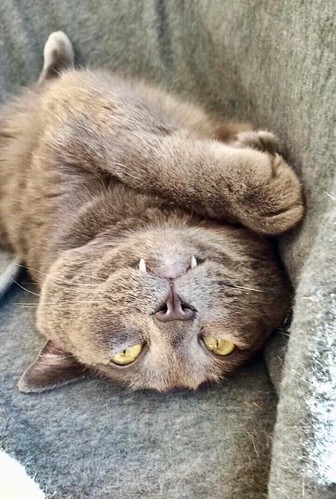can be performed. Although the lasso tool in Photoshop is applicable for choroidal flatmount micrographs[13], we found the lesion border delineation in FFA pictures to be poor (data not shown), as such we opted to get a manual strategy beneath digital magnification making use of the freehand selection tool in ImageJ. Laser generated CNV lesions in PBS treated eyes stay approximately continual during the observation period, with respect to severity; confirming previously reported findings [324]. Depending on our observations, any conclusion drawn on drug efficacy based on lesion area evaluation alone from FFA photos is just not sufficient and often inappropriate, with smaller more severe and hugely permeable lesions getting misinterpreted. Technical limitations of angiography have to be taken into consideration, especially as CNV area measurements depend on the persistence of fluorescein leaking from incompetent, newly formed permeable vessels. Misleading diffuse fluorescein leakage surrounding the CNV, may introduce error when outlining the maximal border of the CNV lesion from FFA images. One would anticipate FFA analysis to exhibit a bigger regular deviation, than the conventional ex-vivo techniques, where blood vessel particular stains generate nicely defined lesions. Even so, strict delineation of lesion borders from high magnification micrographs of choroidal flat mounts, will consist of the elongated vascular budding in the lesion periphery, these projections will effect the overall lesion size calculation and contribute variation amongst lesions specifically in untreated or control animals exactly where vascular budding is more apparent. After the CNV border was established, the typical grey value was calculated. The contribution of normal retinal and choroidal capillaries to the CNV lesion fluorescence was subtracted. Given that the background fluorescence is mottled in appearance over the total retina, background fluorescence adjacent the CNV lesion was deemed a superior representation of local microvasculature. On the other hand, net fluorescence values may well misrepresent the observed CNV lesions since it is unable to distinguish involving the severity of large extremely permeable lesions from smaller sized equally permeable lesions. In vivo FFA evaluation lends itself for the combined measure of area corrected fluorescent intensity, as it represents a worth that establishes lesion severity by incorporating each a measure of CNV vessel integrity, as well as anatomical hyperfluorescent region.  Indeed, regular grading systems involve categorising lesions depending on their severity, judged by CNV specialists, and not by select criteria including size or intensity alone. Accordingly we multiplied the calculated lesion net fluorescence by the calculated CNV lesion region, normalised against the optic nerve 17764671 head region, to establish a quantifiable worth which incorporates both measurements. The accuracy of the quantification technique was tested by like an experimental group with an established method of CNV inhibition [21] and replicating the results making use of standard choroidal flatmounting. As anticipated CNV SR-90107A region calculated applying our FFA analysis strategy indicated a considerable difference within the size of CNV lesions of rats administered with anti-VEGF remedy than the PBS injected counterpart. We observed elevated variability of CNV severity at week 3 in anti-VEGF treated rats; we postulate that the anti-VEGF antibody provided straight away post laser and readministered at 7 days post laser, has been partially cleared
Indeed, regular grading systems involve categorising lesions depending on their severity, judged by CNV specialists, and not by select criteria including size or intensity alone. Accordingly we multiplied the calculated lesion net fluorescence by the calculated CNV lesion region, normalised against the optic nerve 17764671 head region, to establish a quantifiable worth which incorporates both measurements. The accuracy of the quantification technique was tested by like an experimental group with an established method of CNV inhibition [21] and replicating the results making use of standard choroidal flatmounting. As anticipated CNV SR-90107A region calculated applying our FFA analysis strategy indicated a considerable difference within the size of CNV lesions of rats administered with anti-VEGF remedy than the PBS injected counterpart. We observed elevated variability of CNV severity at week 3 in anti-VEGF treated rats; we postulate that the anti-VEGF antibody provided straight away post laser and readministered at 7 days post laser, has been partially cleared
